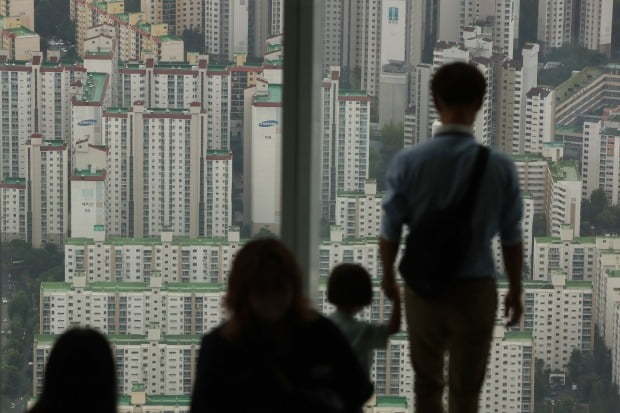High cost of housing plays a role in South Korean couples not wanting to have babies, new study suggested, as the country struggles to find ways to reverse a shrinking population.
According to the report, released Monday, by the state-affiliated Korea Research Institute for Human Settlements, a 1 percent rise in the median home prices leads to 0.002 fewer births per woman.
As of end-2021, Korean women had an average of just 0.81 babies over their lifetimes, which was the world’s lowest total fertility rate. Down from 0.84 the previous year, it was also a new record since data compiling began in 1970.
According to demographers, for the population to maintain its current size, a rate of 2.1 is needed.
To find the correlation between birthrates and housing prices, the Sejong-based think tank analyzed relevant data from January 1992 through September 2022.
“The growing effect of real estate prices on Korea’s birthrate is possibly a result of more couples approaching child planning from a financial perspective,” Park Jin-baek, an associate researcher at the institute, wrote in the report.
He projected that the correlation between a couple’s finances and child plans is likely to grow stronger.
The report also found that the “shock cycle,” in which a spike in real estate markets lowers birthrates, had become shorter over the reviewed period.
In the 1990s, it took some 10 months for the ripples of home price surges to start having an impact on the population front. From the mid-2010s, the waves took an average 1 or 2 months to complete the cycle.
According to the country’s lifecycle deficit data from Statistics Korea, Koreans, on average live on private and public support amounting to 615.8 million won until the age of 26. It is at age 27 that their labor income exceeds consumption.
The lifecycle deficit data is widely seen as an indication of the financial burden placed on parents to raise a child in Korea.
Park, in the paper, called for further study on the correlation between housing costs and birthrates to suggest a more effective national birthrate strategy. For instance, the issue most relevant to young couples would be rent, rather than property prices or taxes, he pointed out.
For housing costs not to weigh down on births, home prices should stabilize in levels that are within the reach of young couples and market volatility should be kept low, Park noted. “To make that possible, a steady supply of affordable housing is necessary.”
The institute’s paper comes as the government searches for ways to reverse a falling birthrate, amid warning that South Koreans are on course for extinctions.
In October, the nation's 51 million population shed 9,104, marking the 36th consecutive month of decline. The country reported the first natural drop in its population in 2020.
With deaths continuing to outpace births and the 65-or-older population growing, the fate of many things in South Korea, including its economy, hinges on how the country copes with the demographic changes, experts and policymakers say.
With 0.81 births per woman in end-2021, South Korea was the only country where the total fertility rate is below 1 among the 38 member countries of the Organization for Economic Cooperation and Development. As of 2020, the birthrate rate among the OECD nations averaged 1.59.
People aged 65 or older currently account for 16.7 percent of South Korea’s total population, a sharp increase from 6.9 percent in 2000.
It is expected the country will become a super-aging society by 2025, where more than 20 percent of the total population is 65 or older.
Life expectancies for Korean men and women are 2.9 years and 3.5 years longer than the OECD averages. Babies born here last year are expected to live 83.6 years.
By Jung Min-kyung (
mkjung@heraldcorp.com)








